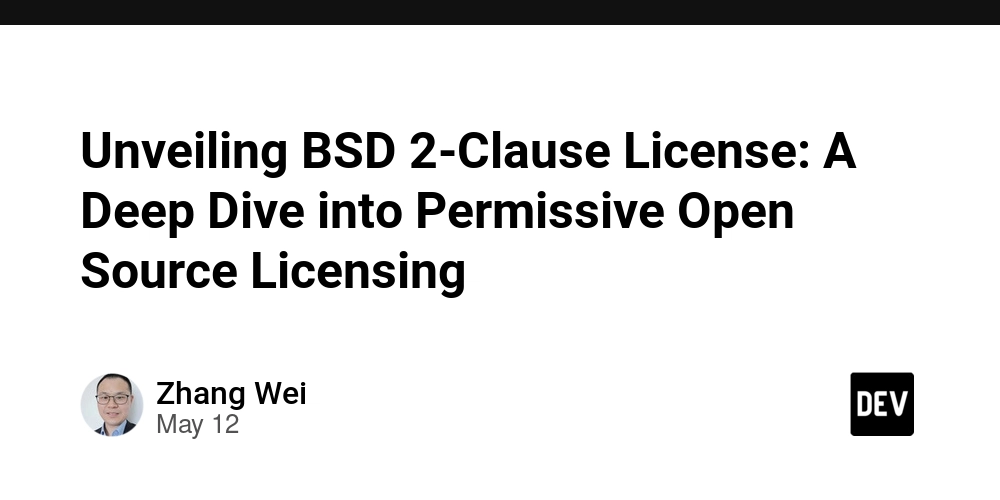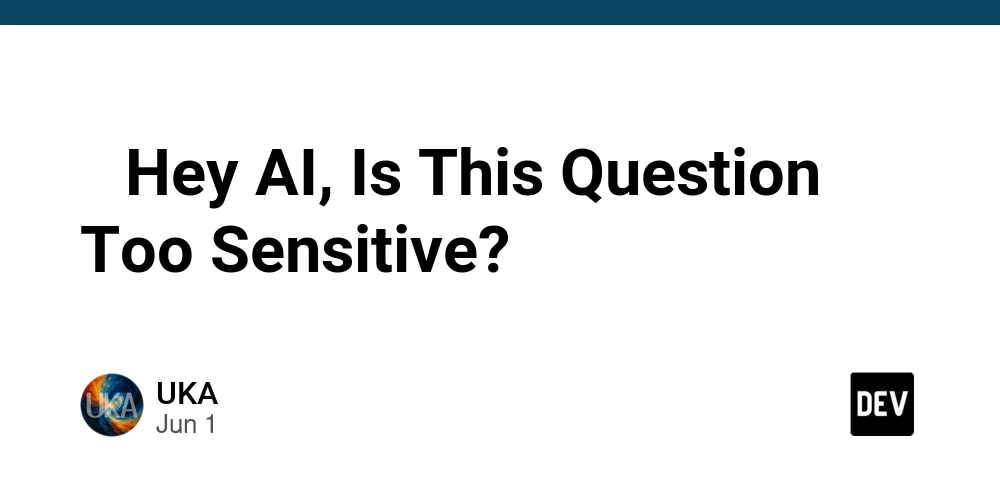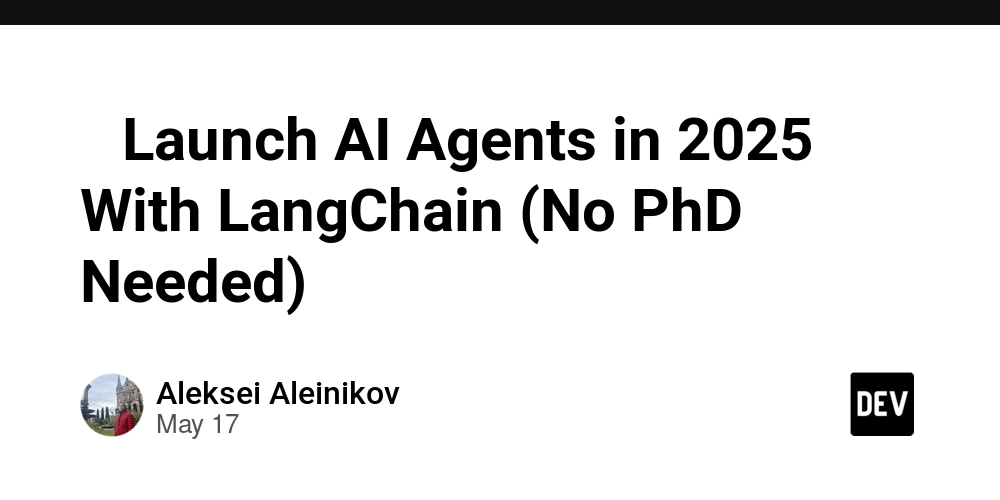Unveiling BSD 2-Clause License: A Deep Dive into Permissive Open Source Licensing
Abstract: This post provides an in-depth exploration of the BSD 2-Clause License—a pillar of permissive open source licensing that has enabled rapid innovation across academic, community, and commercial projects. We walk through its history, core principles, practical applications, challenges, and future trends. This comprehensive review not only expands on the original article "Unveiling BSD 2-Clause License: A Comprehensive Summary, Exploration and Review" but also integrates fresh insights from related resources and industry discussions. Key topics include dual licensing, fair code practices, community sustainability, and emerging blockchain-based compensation models that aim to address long-standing challenges. Introduction The BSD 2-Clause License is a cornerstone within the open source community, offering a minimalist yet powerful legal framework for developers. Renowned for its simplicity and clarity, this license permits free use, modification, and distribution of software with minimal restrictions. In today’s dynamic digital environment—where rapid innovation and community collaboration reign—it is essential to understand both the benefits and potential pitfalls of such permissive licensing. In this post, we navigate the history, core concepts, real-world examples, and future outlook of the BSD 2-Clause License, along with comparisons to emerging licensing alternatives like the Open Compensation Token License (OCTL). Background and Context Historical Roots and Evolution Originating from the Berkeley Software Distribution (BSD) operating system developed at the University of California, Berkeley, the BSD 2-Clause License was created to foster an environment of academic collaboration and innovation, free from excessive legal overhead. Early adopters of this license in projects like FreeBSD, OpenBSD, and NetBSD quickly recognized its value—allowing them to freely incorporate code with minimal attribution requirements. The design of the BSD 2-Clause License emphasized permissiveness and minimal restrictions, which, compared to licenses like the GNU General Public License (GPL), provided a less burdensome legal framework for developers and commercial entities alike. Licensing Ecosystem and Definitions The landscape of open source licensing spans various models—from highly permissive licenses (MIT, Apache License 2.0) to more restrictive, copyleft licenses (GNU GPL). The BSD 2-Clause License falls in the former category. It is often noted in developer circles and Stack Overflow licensing discussions for its brevity and clarity. Its minimal language not only simplifies legal compliance but also supports rapid iteration and integration, factors that contribute to its widespread adoption. Ecosystem Context Today, permissive licenses like the BSD 2-Clause License form the backbone of numerous technology ecosystems. Many commercial software companies and independent projects leverage this license because they can integrate BSD-licensed components into proprietary products without stringent obligations. This flexibility paves the way for several dual licensing models, where the open source version is released under BSD while a separate commercial license offers additional benefits or protections. The ecosystem now even sees discussions of blockchain-based solutions (e.g., OCTL) that reward developers through token-based compensation models. Core Concepts and Features Simplicity and Permissiveness The standout feature of the BSD 2-Clause License is its minimalistic language. With only two clauses—covering attribution and disclaimer of warranty—the license ensures that software can be substantially reused and redistributed without many legal encumbrances. The clarity of the license language helps developers avoid the confusion associated with more complex licensing terms. Legal and Commercial Flexibility The BSD 2-Clause License supports both open source collaboration and commercial use. Its permissiveness means that there is no obligation to distribute derivative works under the same license, making it particularly attractive to corporations that prefer proprietary enhancements without sharing code changes. For quick legal reference, you may refer to the OSI’s copy of the BSD 2-Clause License. Dual Licensing Possibilities While the BSD 2-Clause License does not inherently support dual licensing (i.e., releasing a project under two different licenses simultaneously), its permissive structure allows project owners to implement a dual licensing strategy with additional legal documents such as Contributor License Agreements (CLAs). Dual licensing can help maintain open source ideals while offering a commercial pathway for revenue generation—a model increasingly discussed within the open source community. Fair Coding and Developer Compensation A commonly raised criticism of the BSD 2-Cla

Abstract:
This post provides an in-depth exploration of the BSD 2-Clause License—a pillar of permissive open source licensing that has enabled rapid innovation across academic, community, and commercial projects. We walk through its history, core principles, practical applications, challenges, and future trends. This comprehensive review not only expands on the original article "Unveiling BSD 2-Clause License: A Comprehensive Summary, Exploration and Review" but also integrates fresh insights from related resources and industry discussions. Key topics include dual licensing, fair code practices, community sustainability, and emerging blockchain-based compensation models that aim to address long-standing challenges.
Introduction
The BSD 2-Clause License is a cornerstone within the open source community, offering a minimalist yet powerful legal framework for developers. Renowned for its simplicity and clarity, this license permits free use, modification, and distribution of software with minimal restrictions. In today’s dynamic digital environment—where rapid innovation and community collaboration reign—it is essential to understand both the benefits and potential pitfalls of such permissive licensing. In this post, we navigate the history, core concepts, real-world examples, and future outlook of the BSD 2-Clause License, along with comparisons to emerging licensing alternatives like the Open Compensation Token License (OCTL).
Background and Context
Historical Roots and Evolution
Originating from the Berkeley Software Distribution (BSD) operating system developed at the University of California, Berkeley, the BSD 2-Clause License was created to foster an environment of academic collaboration and innovation, free from excessive legal overhead. Early adopters of this license in projects like FreeBSD, OpenBSD, and NetBSD quickly recognized its value—allowing them to freely incorporate code with minimal attribution requirements. The design of the BSD 2-Clause License emphasized permissiveness and minimal restrictions, which, compared to licenses like the GNU General Public License (GPL), provided a less burdensome legal framework for developers and commercial entities alike.
Licensing Ecosystem and Definitions
The landscape of open source licensing spans various models—from highly permissive licenses (MIT, Apache License 2.0) to more restrictive, copyleft licenses (GNU GPL). The BSD 2-Clause License falls in the former category. It is often noted in developer circles and Stack Overflow licensing discussions for its brevity and clarity. Its minimal language not only simplifies legal compliance but also supports rapid iteration and integration, factors that contribute to its widespread adoption.
Ecosystem Context
Today, permissive licenses like the BSD 2-Clause License form the backbone of numerous technology ecosystems. Many commercial software companies and independent projects leverage this license because they can integrate BSD-licensed components into proprietary products without stringent obligations. This flexibility paves the way for several dual licensing models, where the open source version is released under BSD while a separate commercial license offers additional benefits or protections. The ecosystem now even sees discussions of blockchain-based solutions (e.g., OCTL) that reward developers through token-based compensation models.
Core Concepts and Features
Simplicity and Permissiveness
The standout feature of the BSD 2-Clause License is its minimalistic language. With only two clauses—covering attribution and disclaimer of warranty—the license ensures that software can be substantially reused and redistributed without many legal encumbrances. The clarity of the license language helps developers avoid the confusion associated with more complex licensing terms.
Legal and Commercial Flexibility
The BSD 2-Clause License supports both open source collaboration and commercial use. Its permissiveness means that there is no obligation to distribute derivative works under the same license, making it particularly attractive to corporations that prefer proprietary enhancements without sharing code changes. For quick legal reference, you may refer to the OSI’s copy of the BSD 2-Clause License.
Dual Licensing Possibilities
While the BSD 2-Clause License does not inherently support dual licensing (i.e., releasing a project under two different licenses simultaneously), its permissive structure allows project owners to implement a dual licensing strategy with additional legal documents such as Contributor License Agreements (CLAs). Dual licensing can help maintain open source ideals while offering a commercial pathway for revenue generation—a model increasingly discussed within the open source community.
Fair Coding and Developer Compensation
A commonly raised criticism of the BSD 2-Clause License is the potential for “BSD exploitation,” where commercial entities use and benefit from freely available code without offering reciprocal improvements or compensation. In contrast, emerging licenses like the OCTL aim to integrate compensation mechanisms using blockchain technology to ensure fair rewards for developers. This conversation about fairness in the open source space is supplemented by various discussions on Twitter and the FSF site.
Key Features Table
Below is a comparison table outlining the key attributes of the BSD 2-Clause License alongside popular alternatives:
| License | Key Attributes | Perceived Strength | Drawbacks |
|---|---|---|---|
| BSD 2-Clause License | Minimal attribution; highly permissive | Simplicity; commercial flexibility | Risk of non-reciprocal commercial use |
| MIT License | Similar simple terms; slightly more popular | Broad compatibility | Also lacks direct compensation mechanisms |
| GNU GPL v3 | Viral copyleft; enforceable reciprocity | Guarantees openness | Limits commercial integration |
| Apache License 2.0 | Permissive; includes explicit patent grants | Protection against patent litigation | More complex than BSD/ MIT |
| OCTL | Blockchain-based compensation; fair code focus | Rewards developers | Newer; less widely adopted |
Applications and Use Cases
Real-World Examples
- Operating Systems: BSD-licensed operating systems such as FreeBSD and OpenBSD have shown how permissive licensing can lead to robust, secure, and high-performance systems. These systems serve both academic research and critical production environments.
- Commercial Products: Many commercial software companies rely on BSD-licensed code to rapidly build and enhance their products. The license’s flexibility allows proprietary modifications without mandatory disclosure of source code.
- Dual Licensing Models: Several projects use a dual licensing strategy—releasing the open source version under BSD and offering a separate commercial license. This model supports revenue generation while maintaining broad community collaboration.
Practical Examples via Bullet List
Some practical use cases of BSD 2-Clause License in technology include:
- Embedded systems: Integrating BSD-licensed libraries for secure and efficient device firmware.
- Cloud-based applications: Allowing companies to scale cloud services by building on BSD-licensed microservices.
- Web servers and networking tools: The widespread use in server applications, such as components in the Apache HTTP Server, demonstrates its versatility.
For additional insights into funding and sponsorship in open source, check out this Dev.to post on GitHub sponsors vs. Patreon which examines various strategies.
Challenges and Limitations
Potential for Exploitation
While the BSD 2-Clause License provides tremendous freedom, it also opens the door for potential misuse. Commercial entities can modify and incorporate BSD-licensed code into proprietary products without any reciprocation. This “BSD exploitation” is a long-standing debate among developers who value fair compensation and community reinvestment.
Lack of Reciprocal Obligations
Unlike copyleft licenses, the BSD 2-Clause License does not mandate that derivative works be open sourced. This absence of a reciprocity clause can lead to situations where improvements and innovations are not fed back into the public domain, potentially hindering community development.
Integration Challenges with Other Licenses
Mixing BSD-licensed code with other licenses, especially those with stricter terms such as the GNU GPL, can create legal complications. Developers must navigate these compatibility issues carefully to avoid conflicts.
Risks Without Contributor License Agreements (CLAs)
Without formal CLAs, contributions—especially from anonymous developers—can become a legal gray area. The lack of clear attribution may lead to disputes over intellectual property rights, as discussed on Stack Overflow Q&A.
Points to Consider (Bullet List)
- Developer Protection: Ensuring that contributions are safeguarded with proper agreements.
- Commercial Fairness: Balancing open use with incentives for continuous improvement.
- Legal Clarity: Simplifying integration between various license types.
For a broader discussion on developer earnings and fair compensation models in open source, consider reading this post on enhancing open source licensing.
Future Outlook and Innovations
Evolving Licensing Models
The future of open source licensing is witnessing a wave of innovations driven by the need for equitable developer compensation and community sustainability. Emerging models such as blockchain-based licenses (for example, OCTL) propose new mechanisms that automatically reward developers for commercial use and contributions.
Dual Licensing and Contributor Agreements
The trend of dual licensing is expected to grow further. Organizations are increasingly supplementing permissive licenses like BSD with CLAs and other legal tools to ensure fair sharing of benefits. These legal enhancements aim to protect the interests of both individual developers and commercial entities.
Integration of Blockchain Technology
Blockchain’s ability to provide transparent, immutable records is being explored to safeguard IP rights and ensure developer compensation. This advancement is part of a broader discussion on the future of open source funding and equitable revenue sharing. For additional perspectives on blockchain’s role in open source, see the insightful discussions on Arbitrum and blockchain interoperability.
Corporate and Community Collaboration
There is a growing acknowledgment that both corporations and open source communities benefit from clear, fair, and adaptable licensing models. As the competitive landscape changes, more companies are adopting licensing strategies that balance freedom with fairness, ensuring that innovation continues to thrive.
For a perspective on the evolving corporate sponsorship landscape, you may explore this Dev.to analysis on crowdfunding platforms.
Summary
In this post, we have explored the multifaceted nature of the BSD 2-Clause License—from its historical roots at Berkeley and its minimalistic, permissive design to its wide application across both open source and commercial spheres. We discussed key challenges such as the lack of reciprocal obligations and the potential for "BSD exploitation," while also highlighting the license’s strengths in fostering innovation and legal simplicity.
Looking ahead, the conversation around open source licensing is evolving. With innovations like blockchain-based compensation models and dual licensing strategies, the sector is moving toward more equitable and sustainable mechanisms that could help protect and empower developers. As open source projects continue to drive technological advancement, continuous dialogue within communities and between corporate and academic stakeholders will be key.
For further details on the original findings, explore the original article on the BSD 2-Clause License. Additional authoritative resources include the Open Source Initiative and discussions on Stack Overflow. You may also stay updated on open source funding trends by following industry experts on Twitter and reading posts such as License Token Revolutionizing Open Source Licensing.
Final Thoughts
The BSD 2-Clause License remains an integral part of the open source ecosystem—a license that champions minimal restrictions and maximum freedom. Its balanced approach has fostered decades of innovation and continues to serve as a benchmark for evaluating new licensing methods. Embracing both its strengths and limitations will empower developers, legal professionals, and businesses alike to navigate a future where open source and fair code licensing not only sustain but flourish.
Key takeaways:
- Simplicity and clarity in licensing facilitate rapid innovation.
- Commercial flexibility and permissiveness support diverse applications.
- Developer compensation and fairness remain critical challenges.
- Emerging trends such as blockchain integration may redefine fair licensing practices.
As the landscape evolves, we encourage the community to stay informed and engaged in discussions about enhancing fairness and sustainability in open source licensing. Happy coding, and here’s to a future where open source freedom, transparency, and fairness go hand in hand!
Additional References & Resources:
- License Token – Open Source Licensing
- Apache License 2.0 Details
- Fundamentals of Open Source Licensing
- Indie Hacking with Open Source Tools
Stay updated and keep learning about the latest in open source licensing innovations as the digital world continues to reshape our future.











































































































































































![[The AI Show Episode 156]: AI Answers - Data Privacy, AI Roadmaps, Regulated Industries, Selling AI to the C-Suite & Change Management](https://www.marketingaiinstitute.com/hubfs/ep%20156%20cover.png)
![[The AI Show Episode 155]: The New Jobs AI Will Create, Amazon CEO: AI Will Cut Jobs, Your Brain on ChatGPT, Possible OpenAI-Microsoft Breakup & Veo 3 IP Issues](https://www.marketingaiinstitute.com/hubfs/ep%20155%20cover.png)




































































































































































































































































_incamerastock_Alamy.jpg?width=1280&auto=webp&quality=80&disable=upscale#)
_Brain_light_Alamy.jpg?width=1280&auto=webp&quality=80&disable=upscale#)



























































































![Nothing Phone (3) has a 50MP ‘periscope’ telephoto lens – here are the first samples [Gallery]](https://i0.wp.com/9to5google.com/wp-content/uploads/sites/4/2025/06/nothing-phone-3-telephoto.jpg?resize=1200%2C628&quality=82&strip=all&ssl=1)



























































































